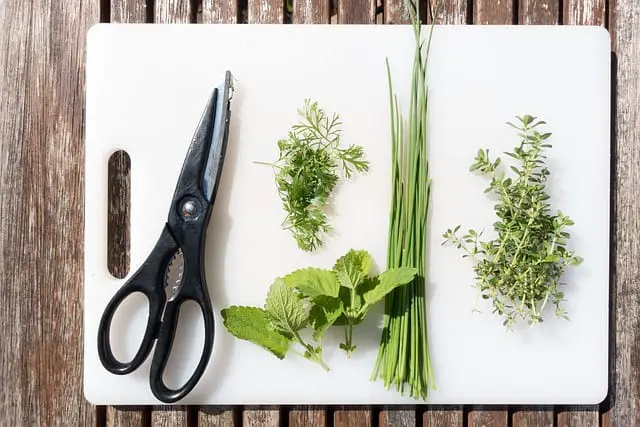Growing your own spices is a fun and rewarding way to bring fresh, flavorful ingredients to your cooking. Whether you have a large garden or just a windowsill, you can easily grow a variety of herbs and spices that will make your dishes taste amazing.
In this article, we’ll explore the benefits of growing your own spices and provide you with some useful tips for growing and harvesting the most popular spices.
Whether you’re growing from seeds or from plants, follow the provided planting, growing and harvesting instructions as your local region and growing conditions will be important to take into account.
Why Grow Your Own Spices?
Growing your own spices has many benefits, including:
- Freshness: Store-bought spices can be months or even years old, which can affect their flavor and potency. When you grow your own spices, you can harvest them at the peak of their freshness, which will result in more flavorful and aromatic dishes.
- Cost Savings: Buying fresh spices can be expensive, especially if you are looking for specialty spices. When you grow your own spices, you’ll save money in the long run and have a constant supply of fresh ingredients.
- Sustainability: Growing your own spices is a great way to reduce your carbon footprint and support sustainable agriculture. You’ll avoid the energy and packaging associated with shipping spices from overseas, and you’ll also be able to use organic and non-toxic methods to grow your spices.
- Health Benefits: Fresh spices are not only flavorful but also have many health benefits, such as reducing inflammation, boosting the immune system, and improving digestion.
Useful Spices to Grow in Your Garden
Here are some of the most popular spices that you can grow in your garden:
- Basil: This sweet and fragrant herb is perfect for adding flavor to pasta sauces, pesto, and salads. It grows best in full sun and well-drained soil.
- Rosemary: This pungent herb is great for flavoring roasted meats, potatoes, and soups. It prefers a sunny location and well-drained soil.
- Thyme: This versatile herb is great for seasoning meats, vegetables, and soups. It grows well in full sun and well-drained soil.
- Cilantro: This fresh and tangy herb is perfect for adding flavor to salsas, guacamole, and curries. It grows best in full sun and well-drained soil.
- Mint: This sweet and refreshing herb is perfect for making tea, cocktails, and salads. It grows well in partial sun and moist soil.
- Sage: This earthy herb is great for flavoring roasted meats, sauces, and stuffing. It grows well in full sun and well-drained soil.
- Ginger: This spicy root is used in many Asian dishes and is also great for making tea. Ginger grows well in partial sun and moist soil.
- Turmeric: This bright yellow root is used in many dishes for its flavor and health benefits. It grows well in partial sun and moist soil.
- Dill weed: Dill weed thrives in full sun and well-drained soil, and its feathery leaves and yellow flowers add a touch of beauty to the garden. Dill weed is a cool-season herb that can be harvested once it reaches a height of about 12-18 inches, and it’s best to sow the seeds directly into the garden in early spring or late summer for a continuous supply.
How to Harvest Your Spices
When harvesting your spices, it’s important to do so at the right time to ensure that they have the maximum flavor and potency. Your local region will impact when the harvesting occurs of course.
Here are some tips for harvesting your spices:
- Harvest spices in the morning when their essential oils are at their peak and before the dew dries.
- Cut stems of spices above a node, which is the place where leaves grow from the stem.
- Don’t over-harvest your plants; leaving some leaves will allow the plant to continue growing.
- Dry spices in a cool, dry place for several days until they are crisp and crumbly.

